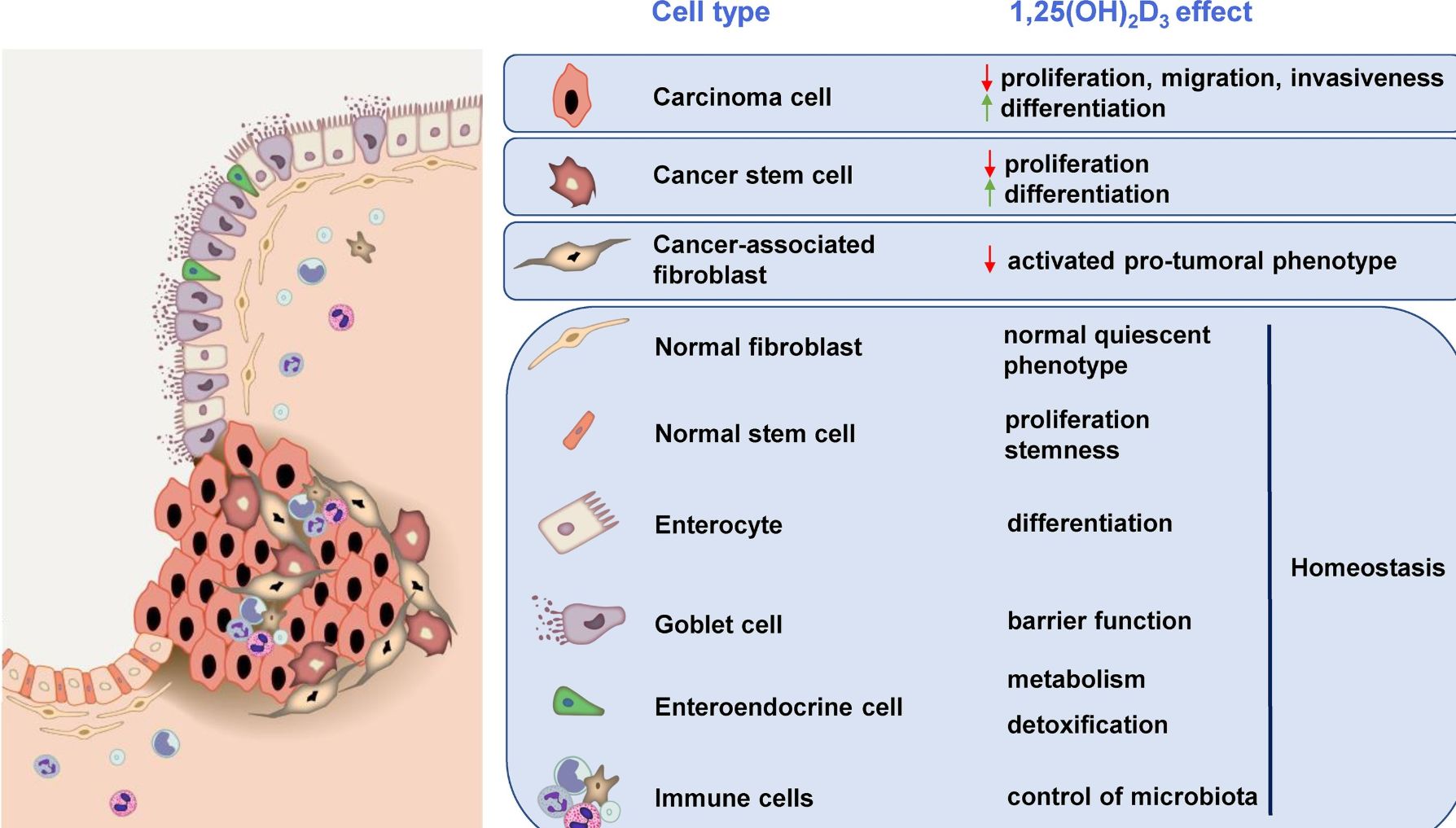An update on vitamin D signaling and cancer
Seminars in Cancer Biology Available online 30 May 2020 Carlberg C
A low vitamin D status is associated with an increased risk of various cancers, such as of colon, breast, prostate and hematological cells. The biologically most active vitamin D metabolite 1α,25-dihydroxyvitamin D3 (1,25(OH)2D3) is a high affinity ligand of the transcription factor vitamin D receptor (VDR). 1,25(OH)2D3 induces via VDR changes to the epigenome of healthy and neoplastic cells and in this way influences their transcriptome.
Ligand-activated VDR binds to more than 10,000 loci within the human genome and affects the transcription of some 1000 target genes in a large proportion of human tissues and cell types. From the evolutionary perspective, the prime role of vitamin D was probably the control of energy metabolism later shifting to modulate innate and adaptive immunity as well as to regulate calcium and bone homeostasis. Since rapidly growing immune and cancer cells both use the same pathways and genes for controlling their proliferation, differentiation and apoptosis, not surprisingly, vitamin D signaling changes these processes also in neoplastic cells.
Thus, anti-cancer effects of vitamin D may derive from managing growth and differentiation in immunity. This review provides an update on the molecular basis of vitamin D signaling, i.e., the effects of 1,25(OH)2D3 on the epigenome and transcriptome, and its relationship to cancer prevention and therapy.














